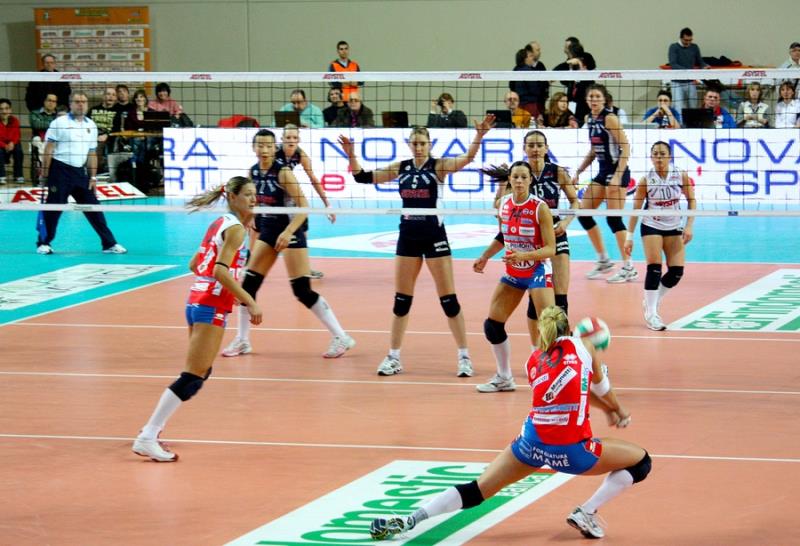Standard formations in Volleyball

Image credit: bigstock.com
There are three standard formations in volleyball, namely the "4-2", "6-2" and "5-1". The numbers in the names of these formations refer to the number of hitters and setters respectively.
The 4-2 formation is often used if the team does not have strong hitter and is common at a lower level of play. In this formation, there are four hitters and two setters. In order to always have a setter in either row, setters will position themselves opposite each other in the rotation.
Front row setters will assume the centre-front position with hitters flanking after service. As there are only two hitters/attackers, the team will have fewer options for offensive plays. However, the setter has the option to hit the ball over the net on the second touch as a surprise attack play.
In the 6-2 formation, all three front row players are attackers and a player from the back row comes forward. This formation allows all six players to act as hitters, while having the option of two players being able to choose to act as setters. This is similar to the 4-2 formation, but the back row setter is able to come forward to set.
The advantage of this formation is the ability to maximise offensive plays as there will always be three front-row hitters available. However, it also requires the two setters to be good hitters, especially when they are not setting up plays.
There is only one player who assumes the role of setter in the 5-1 formation. The setter will remain in the back row, while the three front row players are attackers. The setter can swap positions with any front row attacker when required. This allows for the team to have the option of having five attackers at any point during a play.
The player opposite the setter in this formation is called the opposite hitter. Opposite hitters do not pass; they stand behind their teammates when the opponent is serving. Using this formation, the team has the option of using the opposite hitter as a third attack option when the setter is in a front row position.
The advantage of this formation is that there will always be three hitters for the setter to pass the ball to; and if the setter plays well, the opponent's blocker may not have enough time to block the play. This increases the chances for the attacking team to make a point. Additionally, the setter can confuse the opponent by jumping and hitting the ball into the opponents’ side during second contact.
The 5-1 formation is actually a mix of the 4-2 and 6-2. When the setter is in the front row, the offense will look like a 4-2 formation. When the setter is in the back row, the offense will look like the 6-2 formation.
To receive the latest updates on the happenings in the Singapore sports scene, or to find out more about some of the latest programmes on offer at ActiveSG, like our Facebook page here.





![ActiveSG Academies and Clubs Logo (Solid Colour)[8647]](https://www.activesgcircle.gov.sg/hs-fs/hubfs/ActiveSG%20Circle%202023Theme/images/ActiveSG%20Academies%20and%20Clubs%20Logo%20(Solid%20Colour)%5B8647%5D.png?width=150&height=65&name=ActiveSG%20Academies%20and%20Clubs%20Logo%20(Solid%20Colour)%5B8647%5D.png)




-01.png?width=200&height=141&name=Team%20Singapore%20Logo%20(Red)-01.png)



